Artificial cultivation technology of Nasturtium
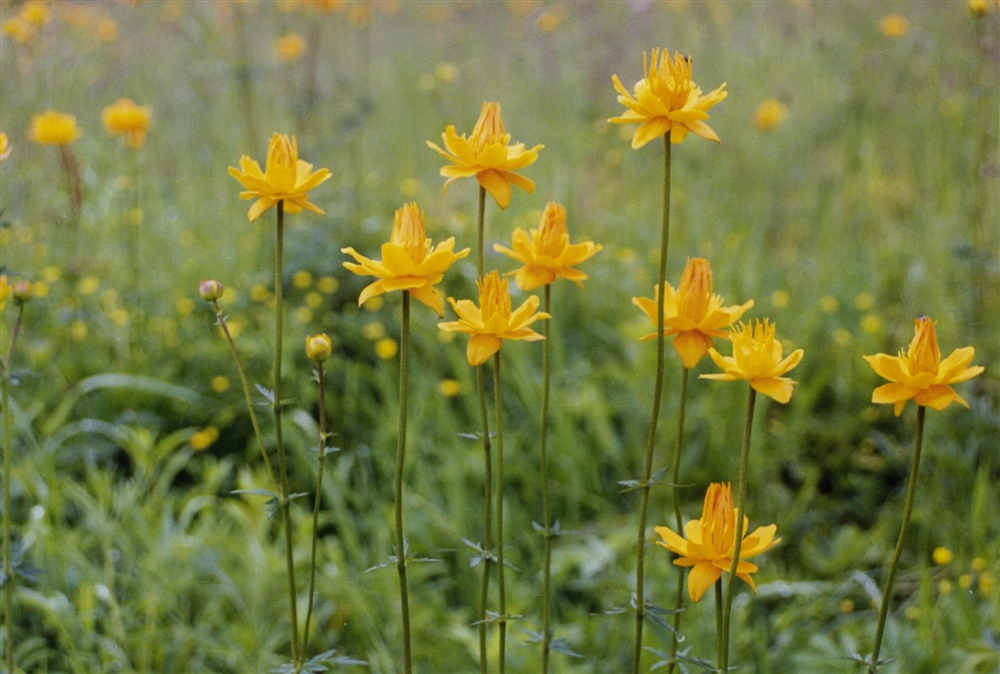
In the past few years, I went to Bashang several times a year for the nasturtium. I also went to the Greater Khingan Range, Changbai Mountain, Ganzi Grassland and Xinjiang, where nasturtiums are distributed. Last summer, I went to Bashang again and saw that the distribution area of nasturtiums had sharply decreased, while the number of tourists and tourist facilities had increased rapidly. I felt that the fate of nasturtiums was not in her control, although wild cultivation and fence protection are currently being carried out. In another five or six months, Bashang will be a season with many tourists. The following is my essay from eight years ago. I didn't post photos before, but now I'm sharing them with you.
Saihanba, located at the junction of northern Hebei Province and Inner Mongolia, is particularly charming in summer. Standing on the Saihan Tower or the Kangxi Dianjiangtai and looking over the dam, you can see endless hills and mountains, with graceful white birch trees, tall and vigorous larch and larch trees, forming a sea of forests. In Yanziyao, Beimandian, Sandaohekou, Junmachang, Yudaokou Ranch and other places, on the vast grasslands, mountain grass slopes and forest meadows, nasturtiums, wild poppies, dandelions, wild roses, burdocks, celery, indigo, delphiniums, aconites and other wild flowers compete for beauty and are refreshing.
On the green grass beach, clusters of small and exquisite golden nasturtiums in full bloom danced, just like the stars in the sky at night, scattered on the boundless green carpet, forming a beautiful picture scroll in the world. When Emperor Qianlong looked at this strange scene, he chanted " the yellow flowers outside the Great Wall are like golden nails piercing the ground ", and Ji Xiaolan immediately came up with the perfect couplet " the white tower in the capital is like a silver diamond piercing the sky ".
The dam is particularly charming because of the golden lotus.
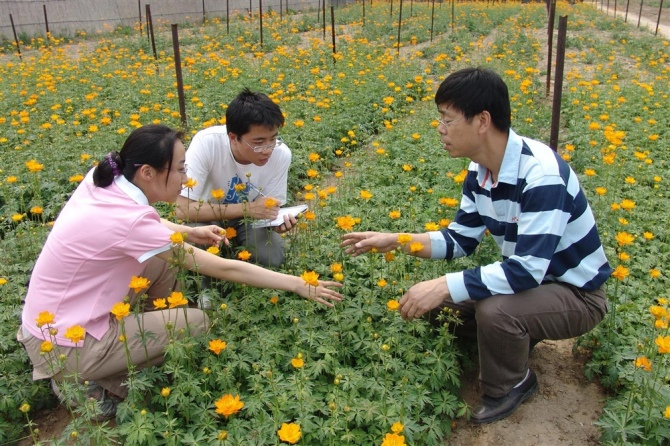
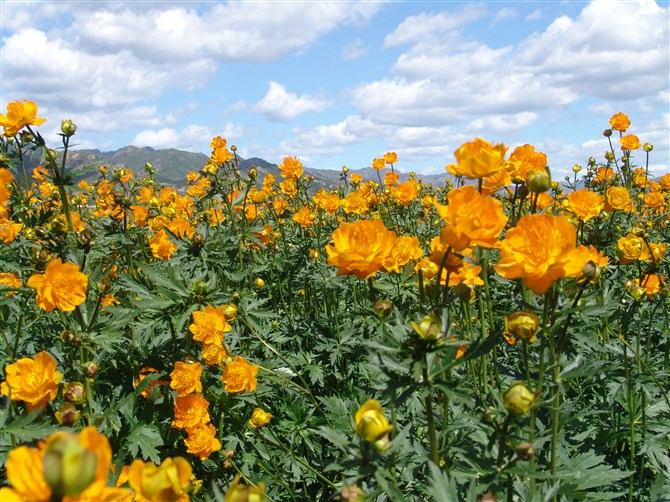
Artificially planted nasturtium in Weichang County
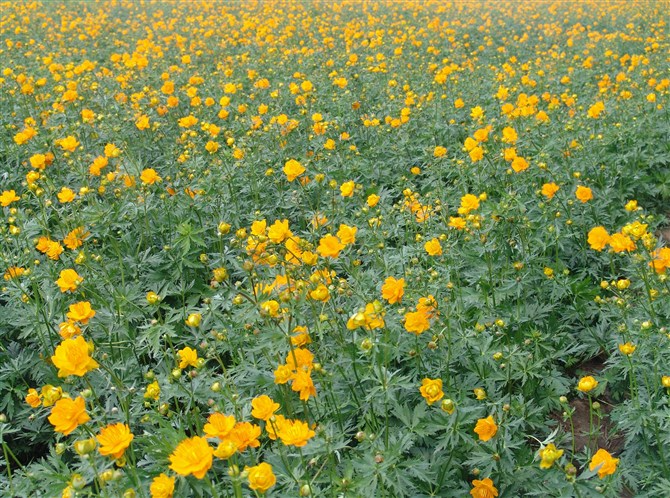
Artificially planted golden lotus in Beijing
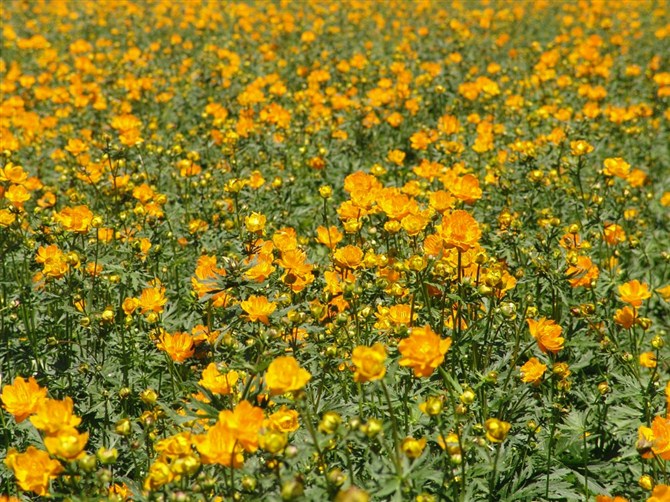
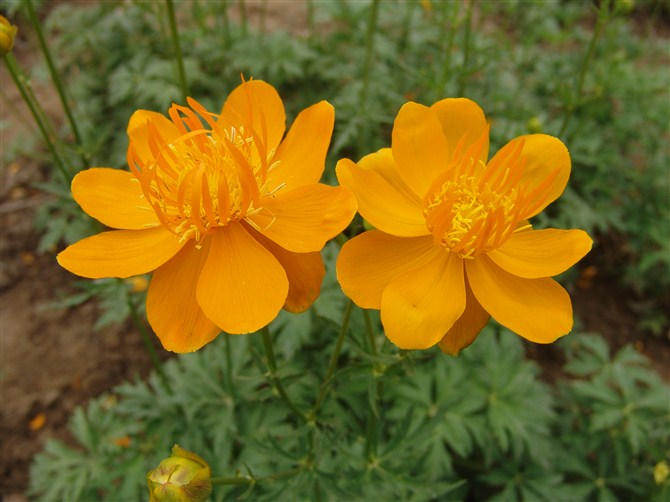
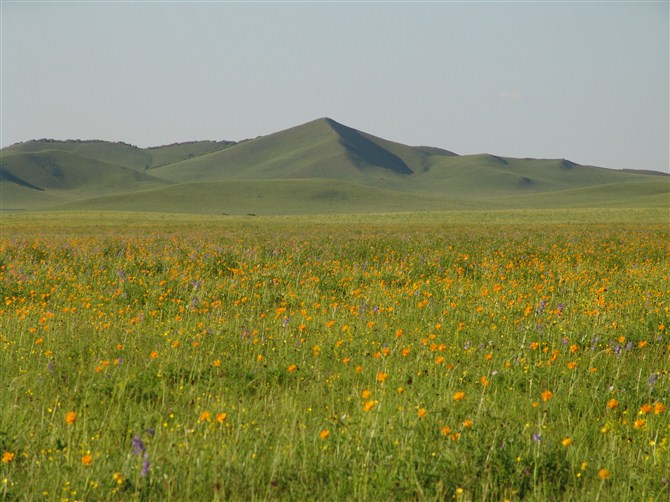
Wild golden lotus on Bashang
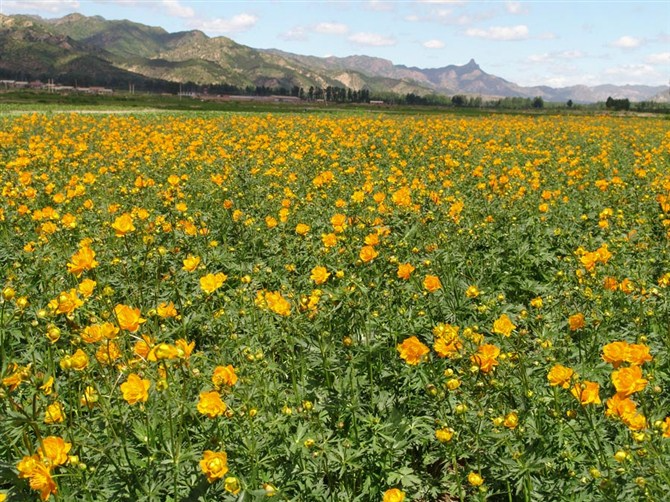
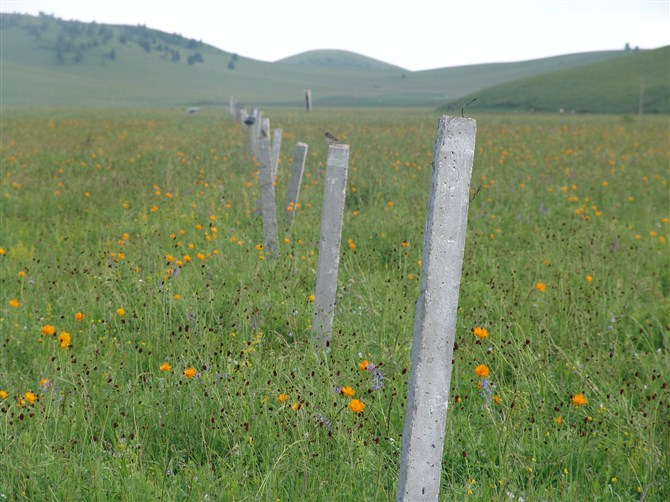
Wild breeding and fencing
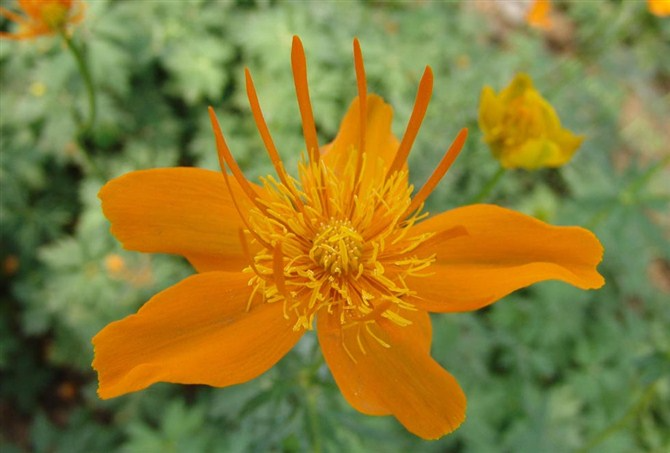
Nasturtium short-petalum
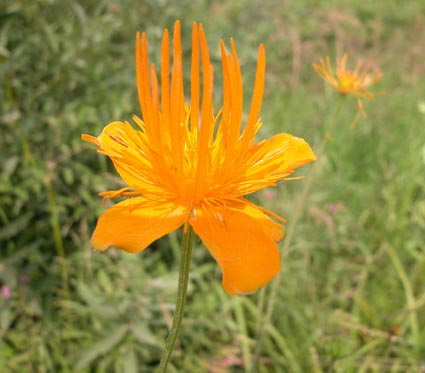
Nasturtium longiflorum
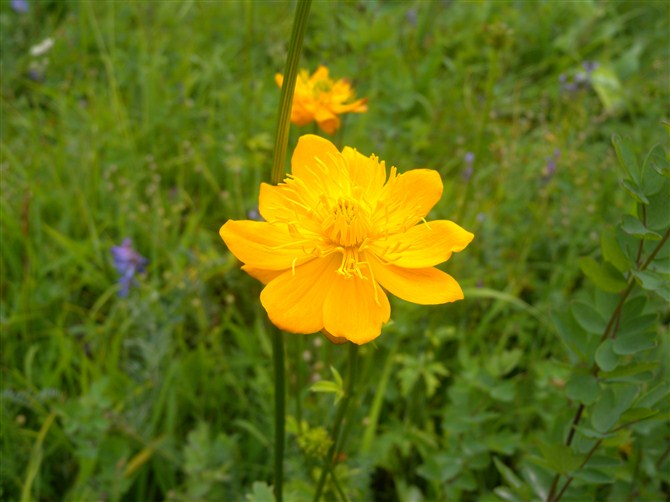
Altai nasturtium
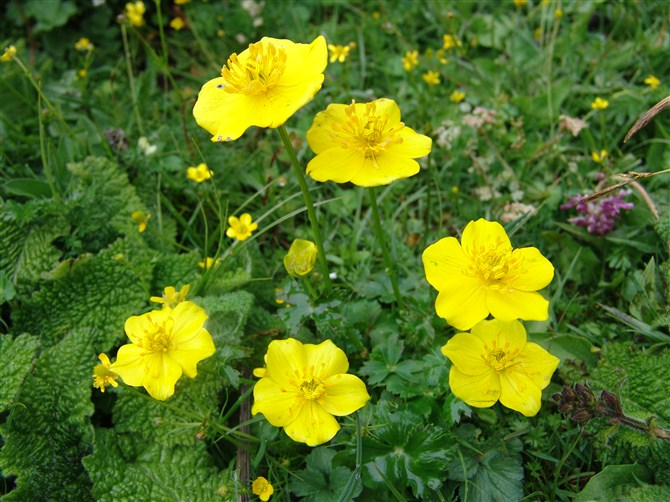
Dwarf Nasturtium
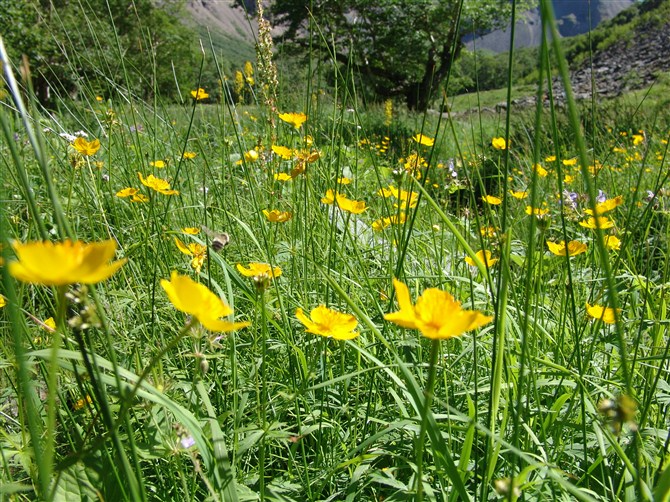
Changbai Nasturtium
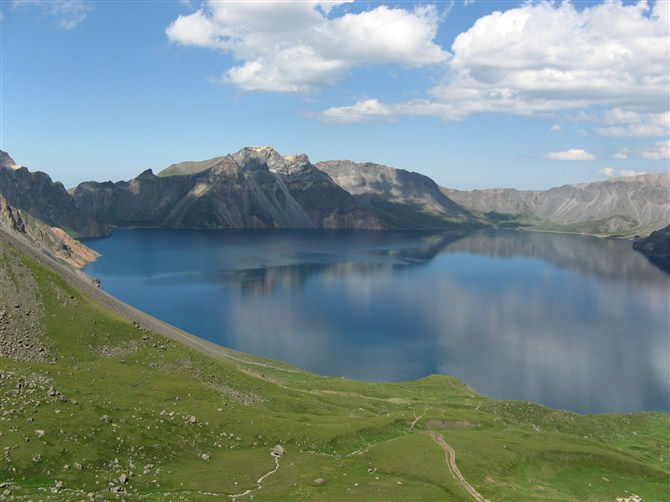
Appendix 1: Papers on Nasturtium published in recent years
1 Ding Wanlong, Chen Jun, Ding Jianbao, et al . Effects of storage methods on breaking dormancy of nasturtium seeds . Chinese Journal of Materia Medica, 2000 , 25 ( 5 ): 266-269.
2 Ding Wanlong, Chen Zhen, Chen Jun, Ding Jianbao, Wei Jianhe . Research on the introduction and cultivation of golden lotus in the plain area of Beijing . Chinese Herbal Medicine, 2003 , 34 ( 10 ): Appendix 1-4.
3 Ding Wanlong, Chen Zhen, Chen Jun . Resources and utilization of medicinal plants of the genus Nasturtium . Wild Plant Resources, 2003 , ( 6 ): 19-21.
4 Zhu Dianlong, Ding Wanlong , Chen Shilin . Research progress of Nasturtium plants . World Science and Technology - Modernization of Traditional Chinese Medicine, 2006 , 8 ( 4 ): 26-33.
5 Nie Bo , Zhang Guijun , Sun Suqin , Zhou Qun , Ding Wanlong . Study on IR identification of different Trollius medicinal materials . Chinese Medicinal Materials, 2006 , 29 ( 4 ): 323-326.
6 Ding Wanlong , Yang Chunqing , Zhu Dianlong, et al . Standard operating procedures ( SOP ) for the production of golden lotus . Modern Chinese Medicine Research and Practice, 2006 , 20 ( 5 ): 12-15.
7 Yan Liqun , Ding Wanlong , Zhu Dianlong, et al . Preliminary study on the longevity of Nasturtium seeds . Chinese Journal of Traditional Chinese Medicine, 2007 , 32 ( 20 ): 2185-2187.
8 Yan Liqun, Ding Wanlong , Zhu Dianlong . Research progress on artificial cultivation and wild cultivation of Nasturtium . Lishizhen Traditional Chinese Medicine, 2008 , 19 ( 2 ): 286-288.
9 Yan Liqun, Zhu Dianlong, Ding Wanlong . Dynamic determination of total flavonoids in the stems and leaves of Trollius chinensis and Trollius brevis . Modern Chinese Medicine, 2008 , 10 ( 9 ): 12-13 , 19.
10 Zhu Dianlong, Li Yong, Ding Wanlong , Chen Shilin . Study on pollen vitality of Nasturtium officinale at different flowering stages . Modern Chinese Medicine, 2008 , 10 ( 7 ): 22-23.
11 Zhu Dianlong, Li Yong, Ding Wanlong , Chen Shilin . Study on pollination mode of Trollius . Chinese Journal of Traditional Chinese Medicine, 2008 , 33 ( 21 ): 2559-2560.
12 Yan Liqun, Zhu Dianlong, Ding Wanlong . Comparative study on the content of vitexin in truncatum . Chinese Journal of Traditional Chinese Medicine, 2009 , 34 ( 5 ): 629-629.
13 Yan Liqun, Ding Wanlong , Zhu Dianlong, Tong Jianhua . Determination of total flavonoids content in Trollius chinensis and its stems and leaves in Bashang area . World Science and Technology - Modernization of Traditional Chinese Medicine, 2009 , 11 ( 3 ): 407-409.
14 Li Yong, Ding Wanlong . RAPD study on genetic diversity of some nasturtium germplasm resources . Journal of Plant Genetic Resources, 2009 , 10 ( 4 ): 535-539
15 Yong Li, Wan Long Ding※. Genetic Diversity Assessment of Trollius Accessions in China by RAPD Markers. Biochem Genet,2010, 48:34–43
16. Li Yong , Ding Wanlong , Chen Shilin , Zhu Dianlong . AFLP analysis of genetic diversity of Trollius germplasm . World Science and Technology - Modernization of Traditional Chinese Medicine , 2011, 13 ( 2 ) : 328-331.
17 Suo Fengmei, Ding Wanlong※, Chen Shilin . Research on numerical zoning of Trollius based on TCMGIS- Ⅰ . World Science and Technology - Modernization of Traditional Chinese Medicine , 2011, 13 ( 1 ) : 109-112
18 Zhao Dongyue, Li Yong , Ding Wanlong※, Ding Jianbao, Sun Zhigang . Study on quality inspection and quality standard of nasturtium seed . Chinese Journal of Traditional Chinese Medicine , 2011, 36(24):3421-3424
Appendix 2: Artificial cultivation techniques of golden lotus
1. Overview
Trollius chinensis Bge. is also known as Golden Knot and Golden Plum Grass. Its flowers are used as medicine, containing alkaloids and flavonoids. It tastes bitter and is cool in nature. It has the functions of clearing away heat and detoxifying, antibacterial and anti-inflammatory. It can treat acute and chronic tonsillitis, acute otitis media, conjunctivitis, tympanitis, etc. It is mainly produced in Hebei (Weichang), Shanxi (Wutai Mountain) and southern Inner Mongolia, and currently mainly relies on wild resources.
2. Biological Characteristics
Nasturtium is a perennial herbaceous plant of the Ranunculaceae family (Figure 23 ). It grows wild at an altitude of 1000 to
3. Cultivation Technology
1. Site selection and land preparation: It is best to choose a gentle mountain or dam area with cold winters and cool summers. The specific planting site should be sandy loam with good drainage. Try to choose a gentle sparse forest or young forest orchard. Before ploughing the land, apply 3,000 to 4,000 kg of decomposed organic fertilizer per mu as base fertilizer, apply it evenly on the surface, then plow it into the ground, harrow it flat and make ridges. Generally, flat ridges are made, and high ridges can be made in rainy areas. The width of the ridge is 1.4 to
2. Reproduction method
( 1 ) Seed propagation: In the wild, the seeds of nasturtium mature gradually in late July. The seeds are very small, with a thousand-grain weight of only 0.8 to
2 to 3 days before sowing , wet the ground first, and when it is slightly dry, rake it flat and then sow. Use the seeds treated with low-temperature sand and sand to spread on the surface of the ridge.
( 2 ) Propagation by division: Dig up the seedlings in late autumn when the plants turn yellow and dry up. The aboveground flower stems are still dry and easy to find, or dig them up in April or May when the seedlings emerge. Divide the dug rhizomes, leaving 1 to 2 buds on each plant, and plant them in the same row spacing as above. Water after planting. If there is no watering condition, the soil should be compacted after planting. The survival rate of those planted in late autumn is higher.
3. Field management
In the early stage of plant growth, weeding and loosening the soil should be done frequently to keep the ridges clean and free of weeds. In July , the plants are basically covered with ridges, which is inconvenient to operate. To avoid damaging the flower stems, loosening the soil and weeding are no longer required. The golden lotus seedlings are not drought-tolerant, so they should be watered frequently to keep the soil moist. In the rainy season, attention should be paid to drainage. In addition to applying enough basal fertilizer before land preparation, appropriate topdressing should be applied during the growth period. When the seedlings are 6 to 10 cm tall after germination and greening, nitrogen fertilizer should be applied to raise the seedlings. 15 to 20 kg of urea can be applied per mu . In June and July , 30 to 50 kg of ammonium phosphate granular fertilizer can be applied per mu. Organic fertilizer should be applied before the ground freezes in winter, 2,500 to 3,000 kg per mu. Each time fertilizer is applied, ditches should be dug and the soil should be covered after application. When introducing it in places with lower altitudes and hotter summers, special attention should be paid to shading to reduce the temperature in the ridges. Generally, a shed should be built, and the shade degree should be controlled at 30-50 % . The shade degree should be reasonably adjusted according to the local climate and plant growth conditions.
4. Pests and diseases and their prevention and control
( 1 ) Underground pests include white grubs, mole crickets, wireworms, etc., which eat underground rhizomes and cause seedlings to break. Special attention should be paid to preventing mole crickets from spreading through the roots in the nursery area . You can use 1 kg of 30- fold dilution of 50 % trichlorfon mixed with 50 kg of fried bran and spread it on the surface of the ridge to lure and kill it. Wireworms can be controlled by mixing 90% trichlorfon or 50% phoxim with 70% cooked grains, drained and then sprinkled on the surface of the ridge.
( 2 ) Root rot is mostly caused by excessive humidity. Soil moisture should be controlled, watering should be done less frequently, shade should be provided in time during summer, and drainage ditches should be dug.
4. Harvesting and Processing
For plants propagated by seeds, a small number of plants will bloom in the second year after sowing, and a large number of plants will bloom after the third year; for plants propagated by root division, they will bloom in the same year. Generally, the flowers that have opened are picked in time during the summer flowering season, transported back to the drying yard, placed on drying mats, spread out to dry in the sun or air-dried for medicinal use.